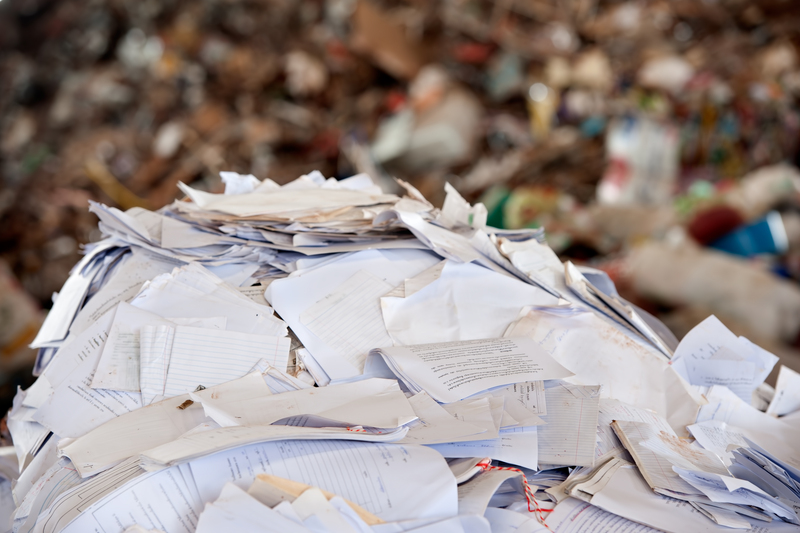The Impact of Waste Clearance Services on Sustainable Futures
In an ever-evolving world where environmental concerns are gaining unprecedented attention, the significance of effective waste clearance services has never been greater. From households to corporates and industrial sectors, the proper handling, disposal, and recycling of waste are critical to safeguarding our planet's future.
Understanding Waste Clearance Services
Waste clearance services refer to the professional management, collection, transport, and disposal or recycling of various types of waste. These services are designed to mitigate the negative impacts of waste on the environment and human health, while also supporting regulations and sustainable practices. Reliable waste removal services play a central role in the creation of cleaner, healthier, and more sustainable communities.
Types of Waste Managed by Waste Clearance Services
- Residential waste
- Commercial waste
- Industrial and hazardous waste
- Electronic waste (e-waste)
- Green and organic waste
- Construction and demolition debris

Global Waste Generation: The Need for Change
Did you know? It is estimated that worldwide municipal solid waste generation will exceed 3.4 billion tonnes by 2050, according to the World Bank.
Such vast quantities of waste put immense pressure on landfills, waterways, and ecosystems. This highlights the crucial need for efficient waste clearance solutions that not only manage waste but also contribute to creating a sustainable future for generations to come.
Environmental Implications of Inefficient Waste Management
- Soil and water contamination: Poorly managed waste can pollute soil and groundwater, harming human health and biodiversity.
- Greenhouse gas emissions: Landfilled organic waste decomposes to produce methane, a potent greenhouse gas that contributes to climate change.
- Loss of resources: Non-recycled materials represent a significant loss of potential resources and energy.
- Health hazards: Accumulation of waste fosters breeding grounds for pests and pathogens, endangering public health.
Role of Waste Clearance Services in Promoting Sustainability
Modern waste clearance companies do more than just remove rubbish. Their operations are essential contributors to sustainable development by incorporating advanced sorting, recycling, and waste-to-energy technologies. Let's delve deeper into their positive impact on sustainable futures.
1. Efficient Waste Segregation and Recycling
Advanced clearance providers prioritize waste segregation at source, ensuring recyclable and non-recyclable materials are separated. This enhances the recycling rate, reduces landfill burdens, and conserves natural resources. Materials like paper, plastic, glass, and metals are diverted from landfills and reintroduced into the production cycle.
- *Recycling* saves energy and reduces greenhouse gas emissions.
- Encourages the circular economy model--where materials are kept in use for as long as possible.
- Reduces reliance on raw material extraction, preserving biodiversity and ecosystems.
2. Safe Disposal of Hazardous and E-Waste
Electronic waste and hazardous materials demand specialized handling due to the presence of toxic substances. Responsible waste clearance services ensure such waste is treated and disposed of, or recycled, in compliance with environmental regulations, minimizing potential harm to the environment and human health.
- Prevents soil, air, and water pollution through controlled treatment processes.
- Recovers precious metals and components from e-waste, reducing environmental mining pressures.
3. Contribution to Resource Recovery and Energy Generation
Some waste clearance agencies collaborate with waste-to-energy plants to convert biodegradable waste into electricity, biogas, or fuel. This not only decreases landfill use but also helps generate renewable energy, supporting the transition to greener economies.
- Organic waste becomes a valuable source of bioenergy.
- Reduces dependency on fossil fuels, thereby lowering carbon footprints.
Economic Impact of Modern Waste Disposal Services
Waste clearance is a vital cog in the global green economy. Beyond environmental benefits, robust rubbish removal companies create employment, drive innovation in recycling technologies, and support local businesses. Investing in efficient waste management service providers leads to significant cost savings for municipalities and organizations through reduced landfill taxes and material recovery.
How Waste Clearance Drives the Green Economy
- Job creation in logistics, processing, and environmental compliance.
- Growth of eco-friendly businesses and markets for secondary raw materials.
- Lower municipal spending on landfills and waste treatment.
- Supports new entrepreneurial ventures in sustainable waste innovation.
The Social Benefits of Structured Waste Removal Services
Implementing comprehensive waste clearance plans fosters healthy, aesthetically pleasing urban and rural environments. Such services indirectly uplift communities by:
- Reducing the proliferation of illegal dumping and fly-tipping.
- Encouraging civic responsibility and awareness towards sustainable habits.
- *Promoting a culture of cleanliness and order.*
- Supporting local initiatives and eco-education.
Technological Innovations Reshaping Waste Clearance Industry
Cutting-edge waste removal services now leverage digital tools, data analytics, and automation to make operations smarter and more sustainable. From route optimization for collection trucks to robotic sorting lines, these technologies ensure maximum efficiency and minimum environmental impact.
Notable Innovations in Waste Clearance
- Smart bins: IoT-enabled bins signal for prompt collection and track fill levels, reducing unnecessary trips.
- AI-powered sorting: Machine learning algorithms sort recyclables more accurately and at scale.
- GPS and fleet management: Optimized routes save fuel and decrease emissions.
- Mobile apps: Empower residents and businesses to schedule and track collections efficiently.
Challenges Facing Waste Clearance Services
Despite their remarkable evolution, waste clearance solutions face enduring challenges:
- Low public participation in segregation at source.
- Inadequate infrastructure for recycling in some regions.
- Poor enforcement of regulations and lack of policy support.
- Complexity in handling hazardous and specialized waste streams.
- Fluctuating recycling markets that affect the profitability and sustainability of recycling programs.
It is imperative for governments, businesses, and citizens to cooperate, endorse innovation, and invest in continual improvement for waste clearance services to thrive.
The Future of Waste Clearance Services: Toward a Sustainable Tomorrow
In the years ahead, waste clearance industry is expected to become even more aligned with sustainability goals. This shift will be driven by tighter regulations, conscious consumer behavior, and ongoing innovations in technology and processes. Key future trends include:
- Expansion of producer responsibility: Businesses will be increasingly accountable for the entire lifecycle of their products, ensuring responsible end-of-life disposal.
- Enhanced circularity: Clear links between clearance, recycling, and manufacturing will tighten the material loops in economies.
- Community engagement: Increased education and participation will ensure the success of public recycling and composting initiatives.
- Investment in zero-waste programs: Both public and private sectors will set ambitious targets to reduce overall waste generation.
- Stronger policies and incentives: Governments will offer more support for sustainable waste practices, including differentiated taxes, bans on single-use plastics, and rewards for eco-friendly companies.

How You Can Support Sustainable Waste Clearance
Change begins at the individual and organizational level. Here's how you can help ensure your waste clearance practices contribute to a greener, more sustainable future:
- Segregate waste at source--make use of color-coded bins for recyclables, organic, and hazardous waste.
- Engage professional clearance services that prioritize recycling and responsible disposal.
- Reduce, reuse, and recycle as many materials as possible before considering disposal.
- Support businesses and products that follow sustainable packaging and end-of-life waste policies.
- Participate in community clean-ups and sustainability awareness campaigns.
Conclusion: Waste Clearance Services as Pillars of a Sustainable Future
The importance of powerful waste clearance services in building sustainable futures cannot be overstated. These services are at the forefront of environmental stewardship, economic growth, and public health protection. By embracing innovation, policy support, and active community involvement, the waste clearance sector stands poised to transform our relationship with waste--turning potential threats into valuable resources for generations to come.
As we collectively recognize the impact of waste clearance services on sustainable futures, it becomes apparent that every action--from conscientious disposal at home to supporting advanced waste management enterprises--draws us closer to a cleaner, greener planet.
Let us all play our part in championing waste clearance solutions for a sustainable tomorrow.